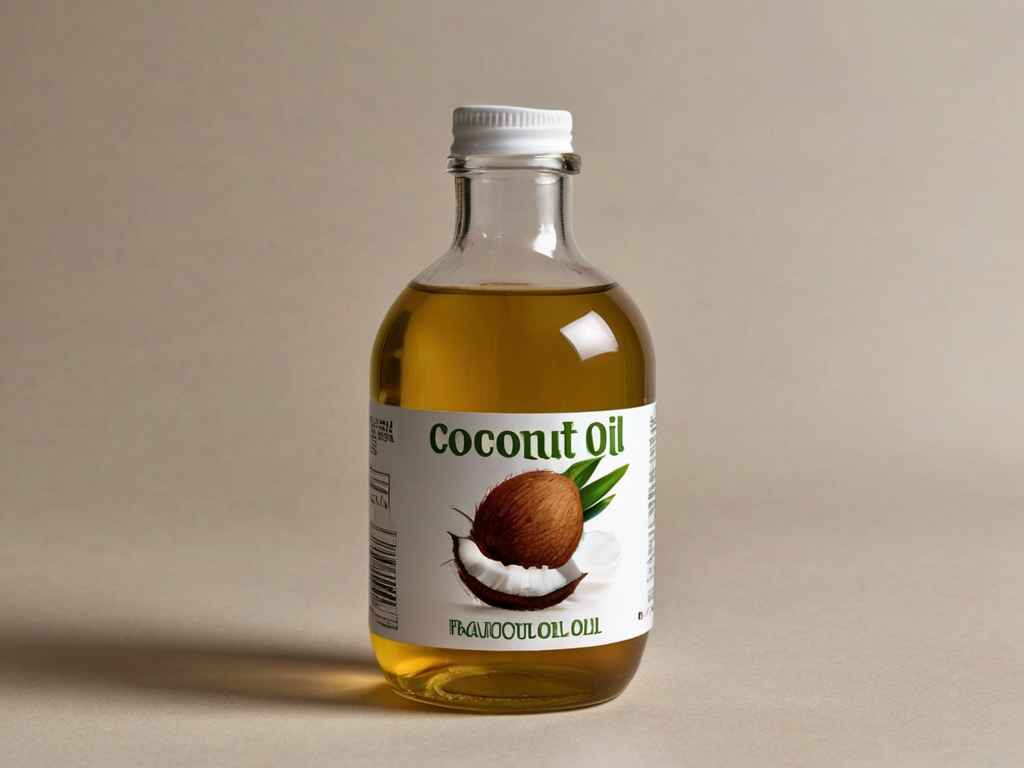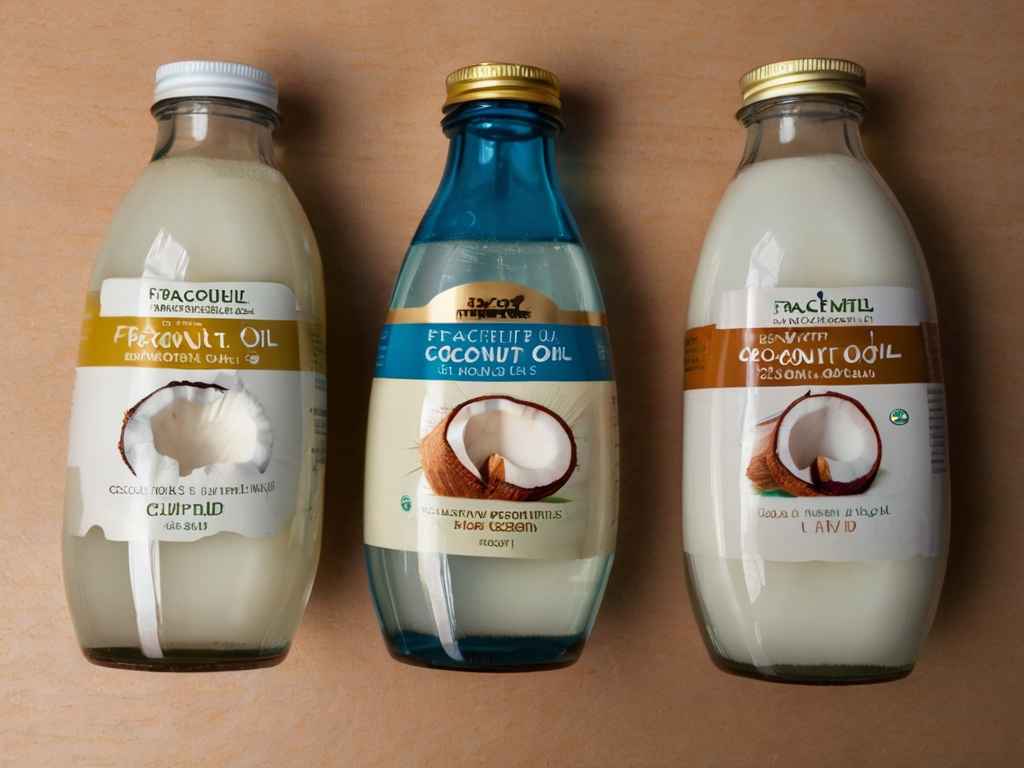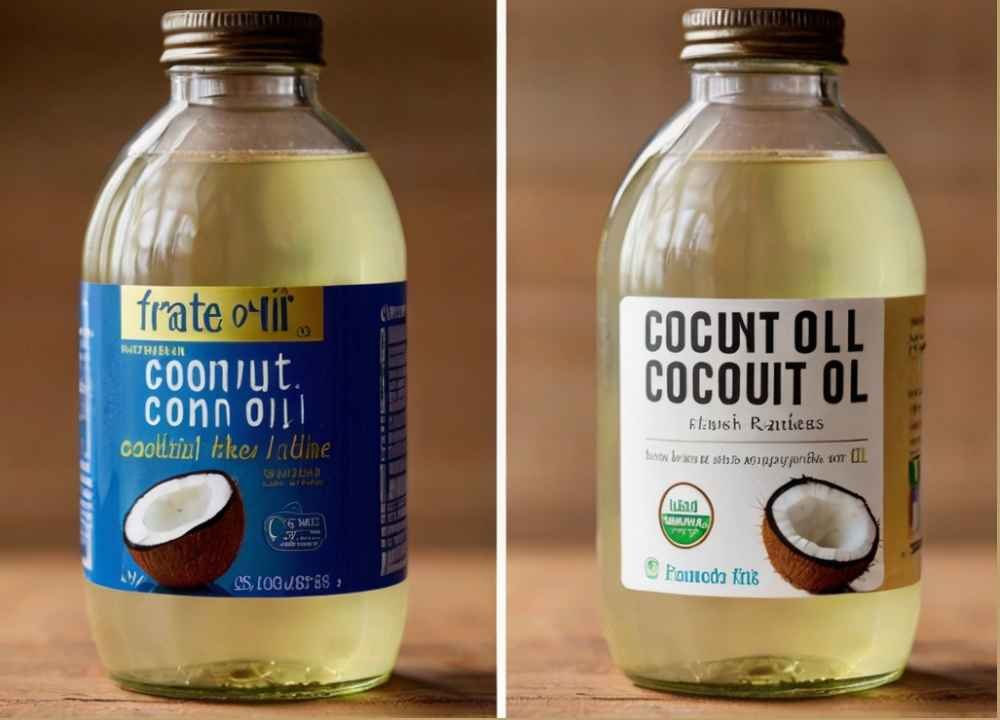Introduction
In the realm of health and wellness, coconut oil has garnered significant attention for its diverse applications and potential benefits. However, within the realm of coconut oil products, two common varieties often cause confusion: liquid coconut oil and fractionated coconut oil. While they both originate from coconuts, these two oils undergo distinct processes that result in notable differences in composition, properties, and uses.
What is Liquid Coconut Oil?
Liquid oil, also known as “regular” or “virgin” coconut oil, is extracted from the meat of fresh coconuts using methods such as cold pressing or expeller pressing. This process retains the natural flavors and aroma of coconut, along with its nutritional components like medium-chain triglycerides (MCTs) and lauric acid.
Properties
- Texture: Typically solid at room temperature but melts into a clear liquid when warmed.
- Flavor: Exhibits a distinct coconut flavor and aroma.
- Nutritional Profile: Rich in MCTs and lauric acid, known for their potential health benefits.
What is Fractionated Coconut Oil?
Fractionated oil, on the other hand, undergoes further processing to isolate specific components of coconut oil, particularly the long-chain triglycerides (LCTs). This process involves fractionation, where the oil is heated and then cooled to separate the different fatty acids, leaving behind mainly the medium-chain triglycerides (MCTs).
Explore: How to Solidify Liquid Coconut Oil for Hair
Properties
- Texture: Remains liquid at all temperatures, hence the term “fractionated.”
- Flavor: Virtually odorless and tasteless due to the removal of aroma compounds.
- Nutritional Profile: Primarily consists of MCTs, specifically caprylic and capric acids.

Key Differences
1. Composition
- Liquid Oil: Contains a mix of MCTs and LCTs, along with other nutrients found naturally in coconut oil.
- Fractionated Oil: Predominantly comprises MCTs, with LCTs removed during the fractionation process.
2. Texture and Appearance
- Liquid Oil: Solid at room temperature, transitioning to a clear liquid when warmed.
- Fractionated Oil: Maintains a liquid form regardless of temperature.
3. Flavor and Aroma
- Liquid Oil: Retains the distinct coconut flavor and aroma.
- Fractionated Oil: Odorless and tasteless, making it suitable for various applications where flavor neutrality is desired.
Uses and Applications
Liquid Oil
- Cooking: Ideal for baking, sautéing, and frying due to its rich coconut flavor.
- Skin and Hair Care: Popular ingredient in homemade skincare products and hair treatments.
Fractionated Oil
- Massage Therapy: Valued for its lightweight texture and non-greasy feel, often used as a carrier oil for essential oils in massage therapy.
- Cosmetics: Commonly incorporated into cosmetics and skincare formulations due to its stability and compatibility with other ingredients.
Stability and Shelf Life
- Liquid Oil: Due to its natural composition, liquid coconut oil may have a shorter shelf life compared to fractionated oil. It is prone to oxidation and rancidity, especially when exposed to heat, light, and air.
- Fractionated Oil: The fractionation process removes impurities and long-chain fatty acids, resulting in a more stable oil with a longer shelf life. It is less susceptible to oxidation and rancidity, making it suitable for extended storage.
Explore: Does unrefined coconut oil smell like coconut
Nutritional Benefits
- Liquid Oil: Retains more of the natural nutrients found in coconuts, including vitamins, minerals, and antioxidants. It is particularly rich in lauric acid, a type of fatty acid with potential antimicrobial and immune-boosting properties.
- Fractionated Coconut Oil: While fractionated oil primarily consists of MCTs, it may lack some of the nutrients present in liquid coconut oil. However, it still offers the benefits associated with MCTs, such as improved energy metabolism and potential weight management support.

Cooking Applications
- Liquid Coconut Oil: With its rich coconut flavor and aroma, liquid oil is a popular choice for cooking and baking. It adds a tropical twist to dishes and works well in recipes where coconut flavor is desired, such as curries, smoothies, and desserts.
- Fractionated Coconut Oil: Due to its neutral taste and odorless nature, fractionated oil is often used in cooking applications where a flavorless oil is preferred. It serves as a versatile cooking oil and can be used for frying, salad dressings, and other recipes where the flavor of coconut is not desired.
Skin and Hair Benefits
- Liquid Coconut Oil: Known for its moisturizing and nourishing properties, liquid oil is a popular ingredient in natural skincare and hair care products. It penetrates the skin and hair shaft to hydrate, condition, and promote healthy-looking skin and hair.
- Fractionated Coconut Oil: With its lightweight texture and non-greasy feel, fractionated oil is an excellent carrier oil for essential oils in massage therapy and aromatherapy. It absorbs quickly into the skin without leaving a greasy residue, making it ideal for massage oils, lotions, and creams.
Cost and Availability
- Liquid Coconut Oil: Generally, liquid is more readily available and affordable compared to fractionated oil. It can be found in most grocery stores and health food stores in various sizes and packaging options.
- Fractionated Coconut Oil: While fractionated oil may be slightly more expensive than liquid coconut oil due to the additional processing involved, it is still relatively affordable and widely available in stores and online retailers specializing in natural products and ingredients.
By considering these additional factors, individuals can make more informed decisions when choosing between liquid oil and fractionated oil based on their specific needs, preferences, and intended applications.
Conclusion
While both liquid coconut oil and fractionated coconut oil offer unique benefits and applications, the choice between the two ultimately depends on personal preferences and intended use. Liquid oil, with its rich flavor and aroma, is favored in culinary applications and natural skincare remedies. On the other hand, fractionated oil’s neutral odor and texture make it a versatile option for massage therapy, cosmetics, and situations where a scent-free, lightweight oil is preferred.
Whether you’re whipping up a delicious coconut-infused dish or seeking the perfect carrier oil for your aromatherapy blends, understanding the differences between these coconut oil variants empowers you to make informed choices that align with your needs and preferences.
FAQs
- Is fractionated coconut oil healthier than liquid coconut oil?
Both oils offer health benefits, but the choice depends on your specific dietary and skincare needs. Liquid coconut oil retains more of the coconut’s natural nutrients, while fractionated oil is prized for its neutral flavor and texture. - Can I use fractionated coconut oil for cooking?
While it is technically edible, it’s not typically recommended for cooking due to its lack of flavor and aroma. Liquid coconut oil is a better choice for culinary applications. - Is fractionated coconut oil comedogenic?
It is generally considered non-comedogenic, making it suitable for skincare formulations, including those for acne-prone skin. - Can I substitute fractionated coconut oil for liquid coconut oil in recipes?
It’s best to stick to the type of coconut oil specified in your recipe. Liquid coconut oil adds a distinct coconut flavor, while fractionated coconut oil is flavorless and may alter the taste of your dish. - Is there a difference between MCT oil and fractionated coconut oil?
While both contain medium-chain triglycerides (MCTs), MCT oil is typically derived solely from coconut oil and may undergo further processing to concentrate specific MCTs like caprylic acid and capric acid. Fractionated coconut oil is a form of coconut oil that has undergone fractionation to isolate MCTs.


2 Comments
[…] Explore: Difference between liquid coconut oil and fractionated Coconut Oil […]
[…] Explore: Difference between liquid coconut oil and fractionated Coconut Oil […]